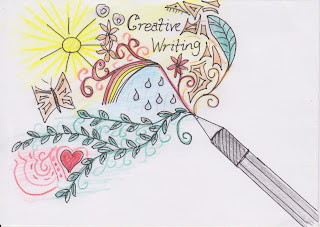In fact, I was delivering Module 1 of the Scout Adult Training Scheme this morning to ten new volunteers in my District. I like Module 1 - Essential Information. It's a huge amount of information for new Leaders to take in, but it covers vital stuff - safety, safeguarding, the structure of The Scout Association and... the fundamentals that underpin everything that Scouting stands for. So as I was driving to this meeting I started to wonder about some of the branding that The Scout Association in the UK has opted for in the last decade. Most of the branding is fine - there's this one:
and then there are brands for the Beavers, Cubs, Scouts, Explorers and Network (which have just been updated, so make sure you're using the correct ones), and then there's this one:
and this is the one I think they've got wrong. I can see what it's about - it's on-trend, it's snappy, it's great for marketing (you see i-kayak, i-camp etc so it's really selling the adventurous opportunities you get in Scouting), but it's too... well... it's too much "i". It sends the message, to our young people and to everybody else, that we're about "what Scouting can do for me", and I think that misses a huge chunk of what Scouting is about.
Scouting is about reaching out, and as the World Scout Bureau strap-line has it, creating a better world:
In a world where pupils stab one another in classrooms because of gang rivalry, where kids throw bricks at fire-engines on the street just for a laugh, where a rogue gunman can walk on to a beach and shoot down random strangers because of ideological hatred, and where teenagers blow themselves up in crowded market places to make a point, then there's more need than ever for Scouts to reach out and build bridges in their communities.
"Doing a good turn every day" isn't about the past, it's a relevant part of an everyday attitude where Scouts are a central part of their community, forging links and promoting understanding and tolerance.
The Scout Association knows that. This year sees the launch of the "Million Hands" initiative, calling on the half-million members of UK Scouting to work on community impact projects. For several years now the Scout Community Week project has seen young people carrying out projects in their local communities. Every week around the country Scouts are visiting fire stations, old people's homes and places of worship, are learning about poverty, homelessness and fair trade, and are carrying out litter-picks and pond-clearances and planting community gardens.
Scouting isn't all about "i". Scouting is about looking outside, holding out our hands and trying to make the world we live in a better place. So I guess ... if that's what Scouting is all about... then i-Scout.



